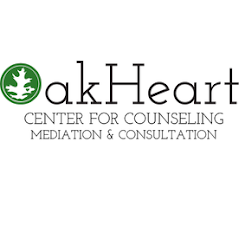Exposure and Response Prevention for OCDWritten by Kat Harris, PhD, LCP and Vanessa Osmer, MA, LCPC, NCCApproximately 1 in 100 adults (and about half that number of children) are thought to have Obsessive-Compulsive Disorder (OCD). OCD can cause a great deal of suffering and impairment. Usually, OCD presents obsessional content in themes, and there is significant diversity in the content areas. Some of the more common content areas or themes of OCD include, but are not limited to, obsessions related to contamination, harm, perfectionism/just-right, religion and morality (often called scrupulosity), identity, relationships, and so on.
Obsessions are defined as persistent unwanted thoughts, images, impulses, or intrusive doubts that cause significant distress. People with OCD tend to interpret these obsessions as being dangerous, shameful, or meaning something sinister or concerning, and therefore want to avoid them and try to push them away. These obsessions can cause many emotions, such as anxiety, fear, doubt, guilt, disgust, uncertainty, and frustration. Obsessions are repetitive, and attempts to suppress the thoughts often only worsen them. For example, what is the first thing you think of if I tell you not to think of a polar bear? That is right. No matter how much you attempt to avoid the thought of a polar bear, it continues to show up in your thoughts. It is not a big deal when we are talking about a polar bear that is relatively meaningless, but what about when the thought is disturbing or upsetting? Compulsions are strong urges to engage in a behavior and/or mental act to reduce the obsessions and/or to keep the obsessions' feared outcome(s) from happening. Although compulsions are technically purposeful behaviors or mental acts, many individuals with OCD describe compulsions as feeling automatic, especially those that occur mentally. When people engage in compulsions, they become reinforced by a short-term sense of relief. However, compulsions tend to strengthen the danger signal of the obsessions long-term. Exposure and Response Prevention (ERP) is a form of Cognitive Behavioral Therapy. While ERP is usually associated with treatment for OCD specifically, the foundations of the treatment itself can apply to several other disorders, including other anxiety disorders and eating disorders. ERP is considered a gold-standard treatment for OCD. It involves asking clients to either trigger or allow obsessions to exist (this part is called exposure). During the exposure, clients are directed to resist pushing the obsessions away and are discouraged from engaging in compulsions or other forms of avoidance (this part is called response prevention). I am sure this sounds hard and scary, and for someone with OCD, it really can be. For this reason, therapists and clients work collaboratively in a safe environment to develop a gradual, systematic approach. Working together helps to increase the chance that clients are successful and have the best chance at learning safety. Learning safety is a critical component of treatment. OCD convinces client's that their thoughts, images, impulses, or doubts are dangerous, and if compulsions are not utilized, something dangerous or bad will happen. Ideally, ERP will teach clients that they can handle distress and uncertainty. As a result, many clients build self-efficacy and learn to trust their ability to face complex thoughts and internal experiences. Additionally, clients get the opportunity to learn that compulsions are not helpful or necessary (and, in fact, perpetuate the cycle of anxiety). I often tell clients that compulsions get all the credit for safety, but they rarely measure up when put to the test. Clients will likely learn that what they are afraid of is unlikely to occur and that thoughts/images/impulses are not necessarily meaningful and essential. Once safety is learned, and clients consistently manage their intrusive thoughts without pushing them away or seeking safety through compulsions, clients enter into the relapse prevention phase of treatment. Relapse prevention is a critically important part of therapy. Relapse prevention aims at reviewing the skills developed, processing the evidence obtained, identifying how the client can generalize the skills moving forward, and developing plans to address any symptoms of lapses or relapses in the future. In some instances, clients may request to return to therapy for booster sessions to ensure they stay on track and do not fall into old OCD habits. For more information, blogs, and resources on OCD and ERP, please visit OakHeart's Obsessive-Compulsive Disorder specialty page: https://www.oakheartcenter.com/obsessive-compulsive-disorder-ocd.html Comments are closed.
|
OakHeart
|
- Home
- Counseling
-
Specialties
- Depression
- Bipolar Disorder
- Anxiety Disorders >
- Obsessive-Compulsive Disorder (OCD)
- Eating Disorders
- Grief and Bereavement
- ADHD
- Maternal Mental Health
- Infertility, Miscarriage, and Neonatal Loss
- Domestic Violence and Sexual Assault
- Posttraumatic Stress Disorder (PTSD) >
- Trauma
- Non-Suicidal Self-Injury (NSSI)
- Substance Use Disorders (SUD)
- Anger Management
- Insomnia
- Divorce Recovery
- Relationship Concerns and Couples Counseling
- Self-Esteem
- Therapy for Therapists
- LGBTQA+ Support
- Faith-Based Counseling
-
Providers
- Erin Mitchell
- Pamela Heilman
- Katie Sheehan
- Hillary Gorin
- Lee Ann Heathcoat
- Adam Ginsburg
- Megan Noren
- Sarah Williams
- Christina Bieche
- Bridgette Koukos
- Laura Lahay
- Kate Nash
- Anna Perkowski
- Alma Lazaro
- Leah Arthur
- Marissa Vogrin
- Erin Blair
- Amy Jakobsen
- Lizzy Lowe
- Tony Fasano
- Gerry Lawm
- Vanessa Osmer
- Kat Harris
- Locations
- Contact
- Treatments
- Employment
- FAQ and Notices
- OakHeart Blog
- Administrative and Leadership Team
- Mental Health Resources
- Divorce Mediation
- Professional Consultation
|
|




